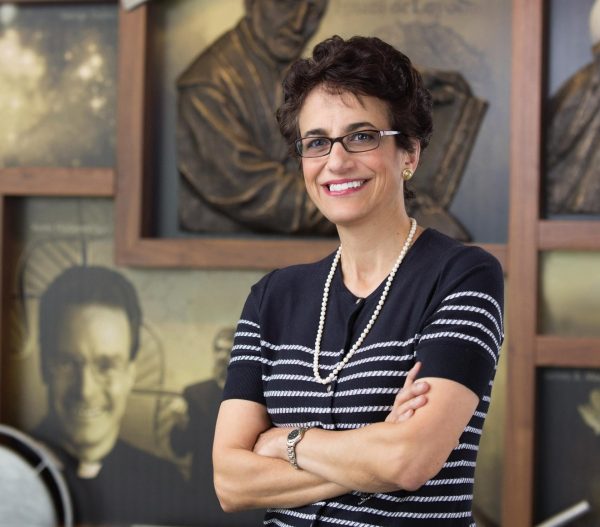Get our email updates
Stay up-to-date on the companies, people and issues that impact businesses in Syracuse, Central New York and beyond.
What's New
Upcoming Events
CNYBJ Job Board

Alcoa, NYPA ink new power-supply contract in Massena, supporting 500 jobs
MASSENA, N.Y. — Alcoa Corp. (NYSE: AA) and the New York Power Authority (NYPA) have signed a new power-supply contract for Alcoa’s Massena smelting-plant operations

NYSDOT to spend $600 million on road paving in 2026
ALBANY, N.Y. — The New York State Department of Transportation (NYSDOT) will spend more than $600 million on over 180 paving projects statewide that are set for completion in 2026. That includes $25.3 million for eight projects in Central New York, $37.6 million for 15 projects in the Mohawk Valley, $59.6 million for 18 projects
Get Instant Access to This Article
Become a Central New York Business Journal subscriber and get immediate access to all of our subscriber-only content and much more.
- Critical Central New York business news and analysis updated daily.
- Immediate access to all subscriber-only content on our website.
- Get a year’s worth of the Print Edition of The Central New York Business Journal.
- Special Feature Publications such as the Book of Lists and Revitalize Greater Binghamton, Mohawk Valley, and Syracuse Magazines
Click here to purchase a paywall bypass link for this article.
ALBANY, N.Y. — The New York State Department of Transportation (NYSDOT) will spend more than $600 million on over 180 paving projects statewide that are set for completion in 2026.
That includes $25.3 million for eight projects in Central New York, $37.6 million for 15 projects in the Mohawk Valley, $59.6 million for 18 projects in the Southern Tier, $35.4 million for 28 projects in the North Country, and $46 million for 17 projects in the Finger Lakes.
The 180 projects, which total almost 2,150 lane miles, are in addition to the paving initiatives already scheduled as part of NYSDOT’s core programs and, taken together, represent the “most ambitious annual road resurfacing agenda ever put forward” by NYSDOT, the office of Gov. Kathy Hochul announced Wednesday.
The $600 million is leveraging the $800 million that Hochul secured in the most recent state budget to augment the final two years of its five-year, $34.3 billion capital plan.
“Investing in modern and reliable infrastructure is a central tenet of good government and something my administration has made a top priority. It also requires partnerships at all levels of government,” Onondaga County Executive Ryan McMahon said in the state’s announcement. “With today’s announcement, New York State continues its commitment to updating Route 5 – a critical thoroughfare in our community. Thank you to the State and all our partners who made this possible.”
The scheduled road-paving projects are listed in the announcement.

Lockheed Martin Q3 profit edges up, sales rise
Lockheed Martin Corp. (NYSE: LMT) on Tuesday reported third quarter net earnings of $1.6 billion, or $6.95 per share, compared to $1.6 billion, or $6.80

Bassett Research Institute awarded multimillion dollar NIH grant
COOPERSTOWN, N.Y. — The Bassett Research Institute’s Center for Rural Community Health recently received approval for a multi-year grant to study improving rural access to

Syracuse University’s Whitman School to offer new master’s degree in real estate
SYRACUSE, N.Y. — The Martin J. Whitman School of Management at Syracuse University (SU) is now offering a master’s degree in real estate, with the

Le Moyne extends LeMura’s contract as president through June 2028
SYRACUSE, N.Y. — Linda LeMura, president of Le Moyne College in Syracuse, will continue leading the school through June 30, 2028. The Le Moyne College

Golisano Institute for Business & Entrepreneurship to open location in Buffalo
BUFFALO, N.Y. — The Golisano Institute for Business & Entrepreneurship is expanding its footprint in Western New York and opening a location in Buffalo. The new campus center will be located in the former office building of The Buffalo News on Washington Street and is expected to welcome its first students in the fall of
Get Instant Access to This Article
Become a Central New York Business Journal subscriber and get immediate access to all of our subscriber-only content and much more.
- Critical Central New York business news and analysis updated daily.
- Immediate access to all subscriber-only content on our website.
- Get a year’s worth of the Print Edition of The Central New York Business Journal.
- Special Feature Publications such as the Book of Lists and Revitalize Greater Binghamton, Mohawk Valley, and Syracuse Magazines
Click here to purchase a paywall bypass link for this article.
BUFFALO, N.Y. — The Golisano Institute for Business & Entrepreneurship is expanding its footprint in Western New York and opening a location in Buffalo.
The new campus center will be located in the former office building of The Buffalo News on Washington Street and is expected to welcome its first students in the fall of 2026.
Ian Mortimer, president of Golisano Institute for Business & Entrepreneurship, shared the announcement Thursday at the future campus center, emphasizing that the Buffalo location will deliver the same accelerated, non-traditional business education offered in Rochester — a model made possible by the Golisano Institute’s founder, entrepreneur, and philanthropist Tom Golisano.
“At Golisano Institute, we remain committed to providing a highly focused set of business learning and experiences that students complete in just two years,” said Mortimer. “With our first class graduating this past August, we have evidence that the Institute’s approach yields business career success, and we’re excited to bring that same opportunity to students in Buffalo and across Western New York.”
The Buffalo campus center will join the Institute’s Rochester–area flagship location in Brighton, which opened in 2023. Its two-year professional certificate program in business & entrepreneurship is designed to equip students of all ages with practical business skills and real-world experience, at a tuition cost of $8,900 per year.
During the program, students will gain “broader exposure” to the business world through a variety of experiences, including multiple internships and through the Golisano Institute’s weekly “Speaking from Experience” series, which propels students to engage directly with some of today’s most successful business and entrepreneurial leaders.
“I founded the Institute to make quality business education more accessible and grounded in what truly matters for success,” Golisano said. “Over the last two years, it’s been inspiring to watch our students in Rochester grow and gain economic opportunities. Buffalo is a city with a strong entrepreneurial spirit, and by expanding here, we’re not only opening doors for more students but also helping regional businesses gain the skilled, motivated talent they need to thrive. If we further the business energy and opportunities across the entirety of Western New York, students and businesses will grow economic wealth.”

Mayor proposes nearly $2 million for three Binghamton housing projects
BINGHAMTON, N.Y. — Binghamton Mayor Jared Kraham on Oct. 16 announced plans to allocate $1.9 million to support three housing projects in the city of

Community Bank grows downtown Syracuse presence with new South Side branch
SYRACUSE — Community Bank N.A. continued its expansion in Syracuse with the recent formal opening of a new branch office on the city’s South Side, an area currently undergoing revitalization. The bank, which is part of DeWitt–based Community Financial System, Inc. (NYSE: CBU), hosted an Oct. 11 ribbon-cutting event and community celebration, in partnership with
Get Instant Access to This Article
Become a Central New York Business Journal subscriber and get immediate access to all of our subscriber-only content and much more.
- Critical Central New York business news and analysis updated daily.
- Immediate access to all subscriber-only content on our website.
- Get a year’s worth of the Print Edition of The Central New York Business Journal.
- Special Feature Publications such as the Book of Lists and Revitalize Greater Binghamton, Mohawk Valley, and Syracuse Magazines
Click here to purchase a paywall bypass link for this article.
SYRACUSE — Community Bank N.A. continued its expansion in Syracuse with the recent formal opening of a new branch office on the city’s South Side, an area currently undergoing revitalization.
The bank, which is part of DeWitt–based Community Financial System, Inc. (NYSE: CBU), hosted an Oct. 11 ribbon-cutting event and community celebration, in partnership with Visa, to mark the opening of the new branch at 4141 S. Salina St.
To commemorate the grand opening, the bank said it invited its new neighbors to a special community celebration at the branch, featuring family-friendly activities, food trucks, and giveaways. The highlight of the event was a special appearance by Syracuse University football head coach Fran Brown, who helped cut the ribbon on the new full-service location and spent time with guests during a meet-and-greet, the bank said in an announcement. Through an NIL collaboration with Syracuse University Football established last year, Community Bank supported players through a teamwide financial literacy program, helping players establish bank accounts and build strategic money management habits.
The remodeled South Salina Street branch is the latest new office Community Bank has opened across Onondaga County under its strategic growth plan and underscores its long-term investment in expanding its presence and service in the region, the announcement stated.
Community Bank has opened two other new branches in the Syracuse area in the last year — one in downtown Syracuse in Hanover Square last October, and another branch in the Liverpool area (town of Clay) this past April. The bank says it will continue to strengthen its presence in the market, investing $42 million in its planned new Syracuse corporate headquarters and opening another branch in Clay in 2026 — bringing its branch count to six across Onondaga County.
South Salina Street branch details
“Today marks a meaningful milestone for Community Bank as we continue to grow our presence in downtown Syracuse and deepen our commitment to the communities we serve across the Northeast,” Community Bank Central New York Regional President Lindsay Weichert said in the bank’s announcement. “Our South Salina branch represents more than growth — it’s a testament to the resilience, opportunity and bright future of this community and we’re proud to be a part of this next chapter, supporting broader revitalization efforts and access to financial guidance and services to the people and businesses on Syracuse’s South Side.”
Among its modern design features, the South Salina Street branch offers Community Bank’s full suite of consumer, business, and government banking products including access to Greenlight Financial Technology Inc. and loan incentives for new customers.
The branch office and drive-thru hours are Monday through Thursday 9 a.m.-4 p.m., and Friday 9 a.m.-5 p.m. Online-banking services are available at cbna.com.

Oechsner Farms honored by state for conservation efforts
NEWFIELD — Oechsner Farms, located in Newfield in Tompkins County, has been awarded the 2025 New York Agricultural Environmental Management (AEM)-Leopold Conservation Award. The honor recognizes a farm and its nominating soil and water conservation district (SWCD) who have “gone above and beyond” in the management of soil health, water quality, and wildlife habitat on
Get Instant Access to This Article
Become a Central New York Business Journal subscriber and get immediate access to all of our subscriber-only content and much more.
- Critical Central New York business news and analysis updated daily.
- Immediate access to all subscriber-only content on our website.
- Get a year’s worth of the Print Edition of The Central New York Business Journal.
- Special Feature Publications such as the Book of Lists and Revitalize Greater Binghamton, Mohawk Valley, and Syracuse Magazines
Click here to purchase a paywall bypass link for this article.
NEWFIELD — Oechsner Farms, located in Newfield in Tompkins County, has been awarded the 2025 New York Agricultural Environmental Management (AEM)-Leopold Conservation Award.
The honor recognizes a farm and its nominating soil and water conservation district (SWCD) who have “gone above and beyond” in the management of soil health, water quality, and wildlife habitat on working land, according to the Sept. 12 announcement from the New York State Department of Agriculture and Markets.
Richard Ball, New York State agriculture commissioner, and partners from the Sand County Foundation visited Oechsner Farms to honor Thor Oechsner and his spouse, Rachel Lodder, who own and operate the farm, during a special ceremony.
Oechsner Farms is a regenerative organic certified grain farm operated by Thor Oechsner and his team. Together, they farm more than 1,200 acres of hard red spring and winter wheats, hulless oats, common and tartary buckwheat, polenta type corn, rye, einkorn, grass/legume hay, and red clover as their main rotational crops, primarily for organic food-grade and craft-malt beverage markets.
Prioritizing soil health has been a key ingredient in the farm’s success. As an active participant in New York’s Agricultural Environmental Management program, Oechsner Farms is a “conservation showcase in Tompkins County,” the department said.
“Farms like Oechsner Farms play a central role in feeding our families while also protecting soil and water quality in communities across New York State,” Richard Ball, New York State agriculture commissioner, said in the announcement. “On behalf of the Department and New York State, I congratulate the Oechsner family and their team on receiving the esteemed AEM-Leopold Conservation Award and the Tompkins County Soil and Water Conservation District for their work with farms in the county and Finger Lakes Region. Their innovation and pride in their work, as well as their commitment to biodiversity and preserving wildlife habitats, are exemplary of the AEM-Leopold mission and an inspiration to other farms following in their footsteps.”
The state made the announcement of ahead of Climate Week, the New York State Department of Agriculture and Markets said.
Sand County Foundation and national sponsor American Farmland Trust will present Leopold Conservation Awards to landowners in 28 states this year. Given in honor of renowned conservationist Aldo Leopold, the award recognizes farmers who inspire others with their dedication to environmental improvement, per the state’s announcement.
In his influential 1949 book, A Sand County Almanac, Leopold advocated for “a land ethic,” an ethical relationship between people and the land they own and manage.
New York’s longstanding Agricultural Environmental Management (AEM) Award paired with the Leopold Conservation Award program in 2020. In partnership with the New York State Department of Agriculture and Markets, the AEM-Leopold Conservation Award honors a farm and its nominating SWCD for their efforts to promote and protect the environment through the preservation of soil and water quality while helping to ensure farm viability for future generations.
Earlier this year, New York State SWCDs were encouraged to identify and nominate the best examples of conservation success in their district. Applications were reviewed by an independent panel of agricultural and conservation leaders from New York.
Get our email updates
Stay up-to-date on the companies, people and issues that impact businesses in Syracuse, Central New York and beyond.
